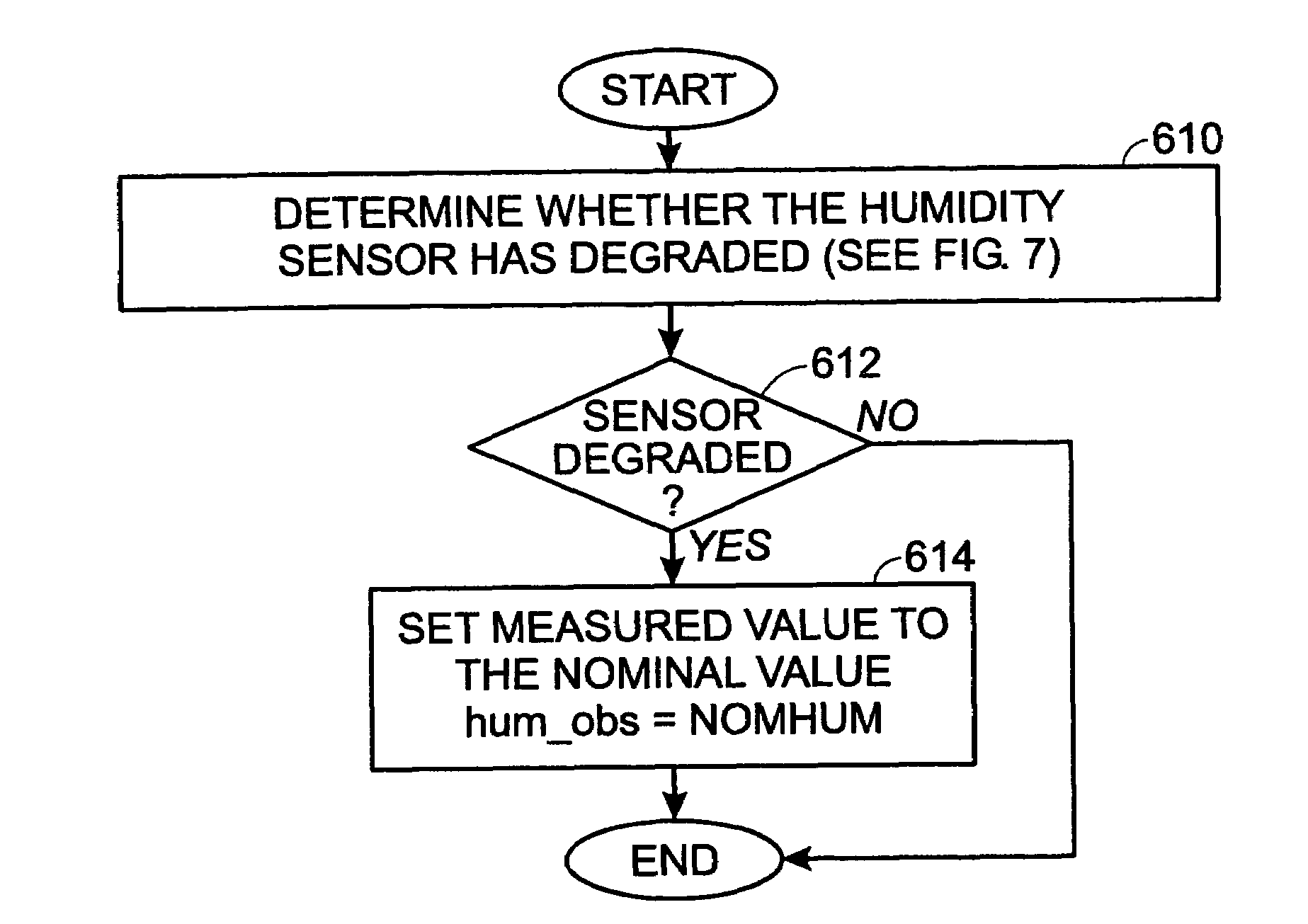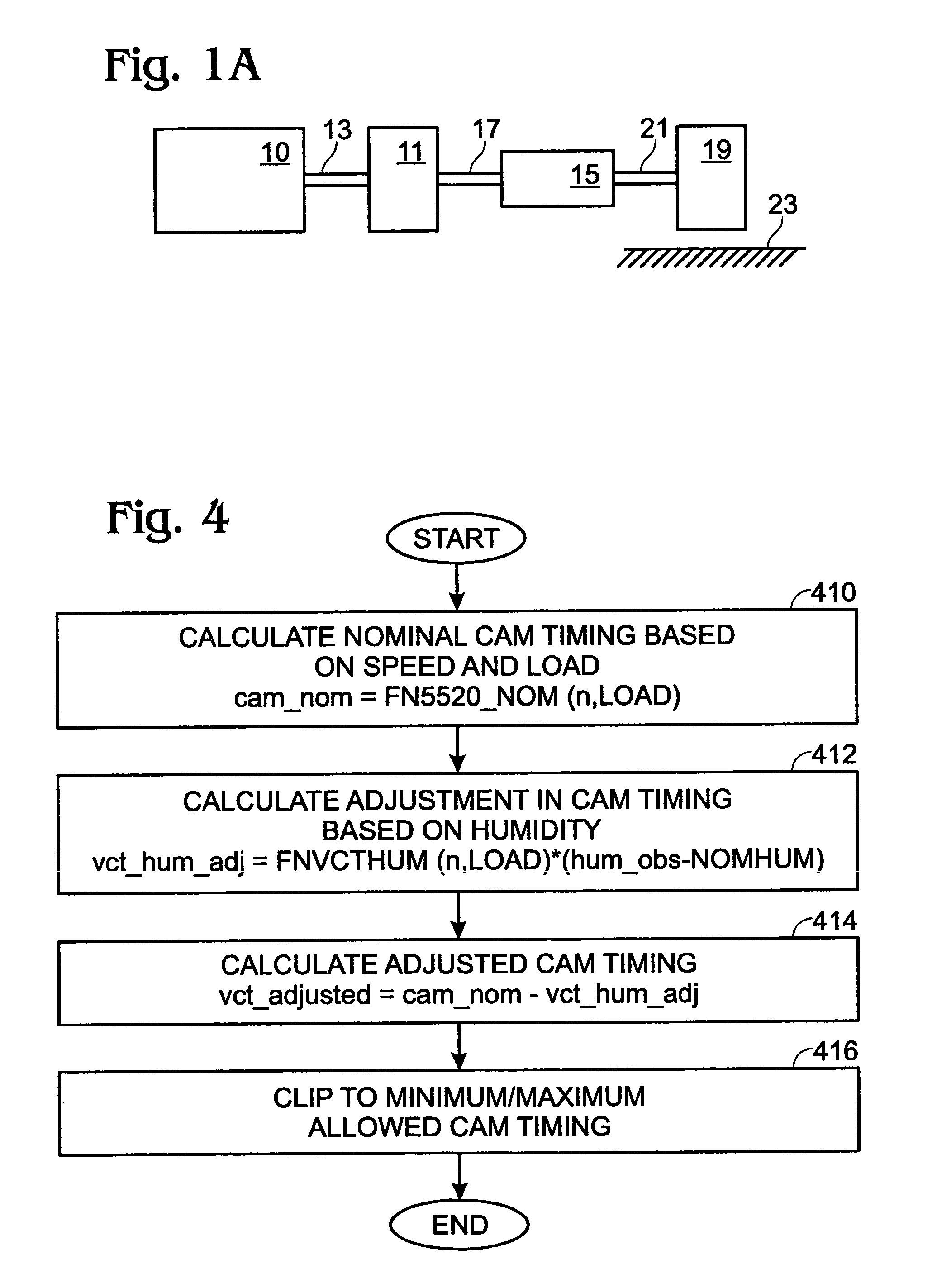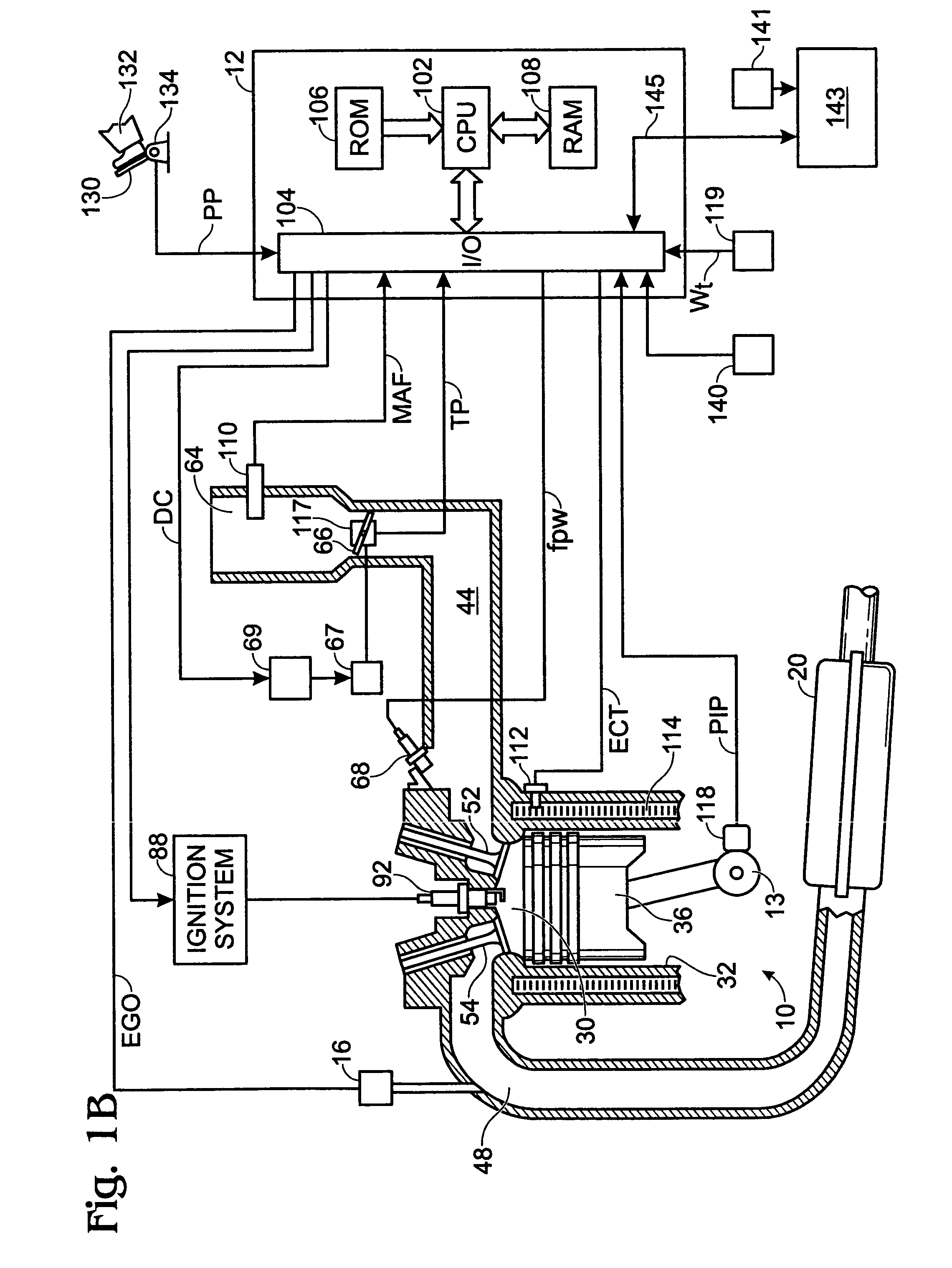Vehicle engine control system utilizing humidity sensor
a technology of humidity sensor and engine control, which is applied in the direction of electric control, machines/engines, mechanical equipment, etc., can solve the problems of piecemeal systems without overall structure, inability to realize the disadvantage of present applications, etc., to reduce any loss in fuel economy performance, improve overall engine operation, and operate with minimal engine misfires
- Summary
- Abstract
- Description
- Claims
- Application Information
AI Technical Summary
Benefits of technology
Problems solved by technology
Method used
Image
Examples
first embodiment
[0059]A first embodiment to determine whether to enable humidity sensor monitoring is now described with regard to FIG. 8A. Here, the diagnostic is performed upon entering preselected engine operating conditions, such as: at key-on after a long soak (engine off) time. In this embodiment, the second sensor can be a vehicle interior humidity sensor as described in FIG. 1. Note that for a short soak, or for vehicle running operation, the interior sensor may read high due to a sweaty driver or other source of water vapor in the vehicle. Or, it may be low due to the action of an air conditioning system. As such, after a long soak, a more reliable comparison is possible. Even then, however, multiple vehicle trips can be used to increase the reliability of detection. In this way, the monitoring is enabled during selected conditions where both sensors should read similar values, and thus improved detection can be achieved. Note that in an alternative embodiment, one (or both) humidity signa...
second embodiment
[0062]A second embodiment performs the diagnostic on a continuous basis. This can be used when such continuous monitoring may be needed to determine degradation throughout vehicle operation. In this case the interior humidity sensor may not be used. Rather, the second humidity sensor is installed in the vehicle in a location where it would read close to the same air stream as the first sensor, whether it is in the engine inlet airflow stream or the ambient stream. Again, the electrical circuits can be designed to minimize the potential of common degradation of the sensors simultaneously. Also, the routine of FIG. 8B can perform the reading of the sensors for diagnosis when they have reached an equilibrium value by using filters, for example.
[0063]Referring now specifically to FIG. 8B, in step 830, the routine determines whether the time since vehicle key on is greater than a threshold values (TIME_ON_VALUE). If so, in step 840, diagnosis is enabled. Thus, by using the key on time it...
PUM
 Login to View More
Login to View More Abstract
Description
Claims
Application Information
 Login to View More
Login to View More - R&D
- Intellectual Property
- Life Sciences
- Materials
- Tech Scout
- Unparalleled Data Quality
- Higher Quality Content
- 60% Fewer Hallucinations
Browse by: Latest US Patents, China's latest patents, Technical Efficacy Thesaurus, Application Domain, Technology Topic, Popular Technical Reports.
© 2025 PatSnap. All rights reserved.Legal|Privacy policy|Modern Slavery Act Transparency Statement|Sitemap|About US| Contact US: help@patsnap.com



